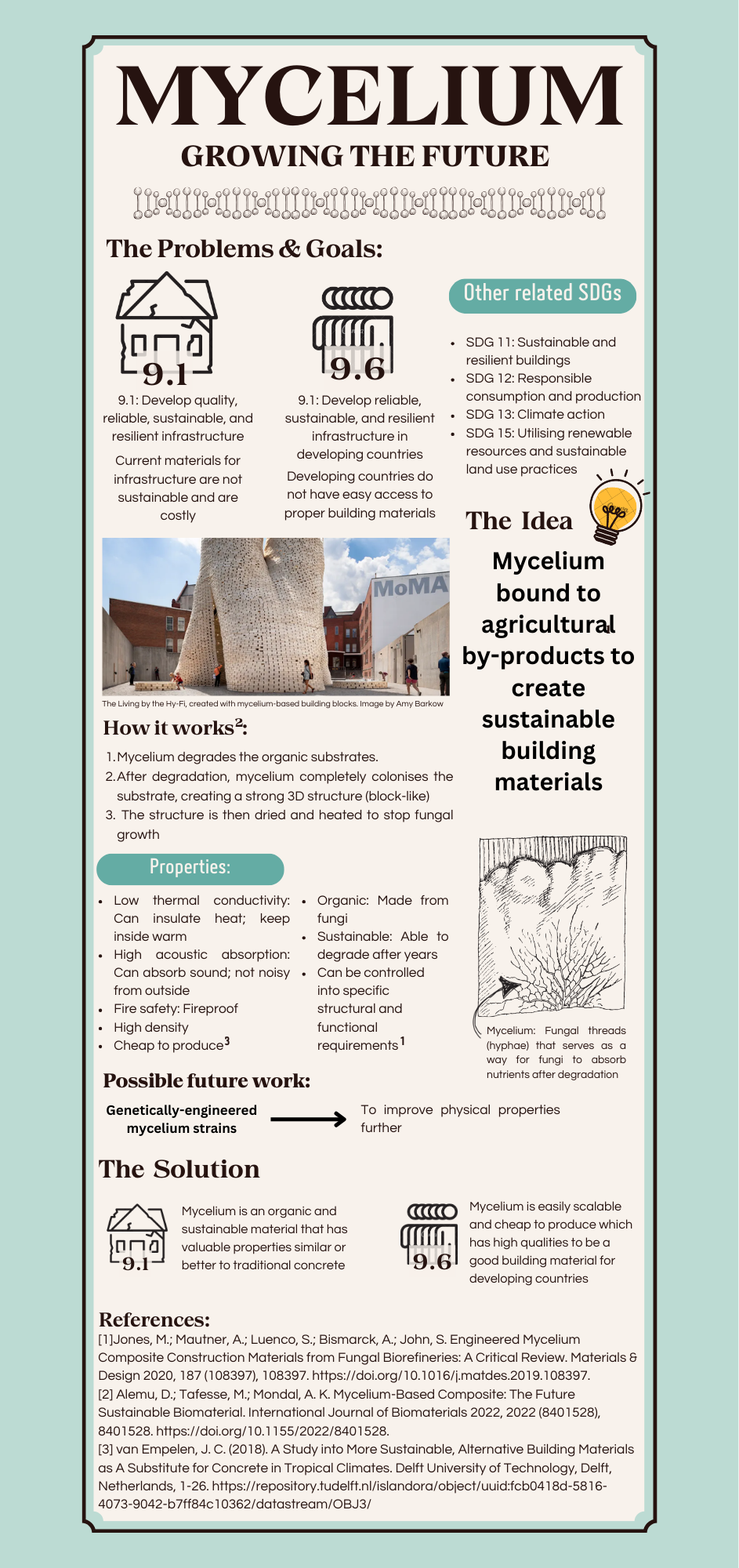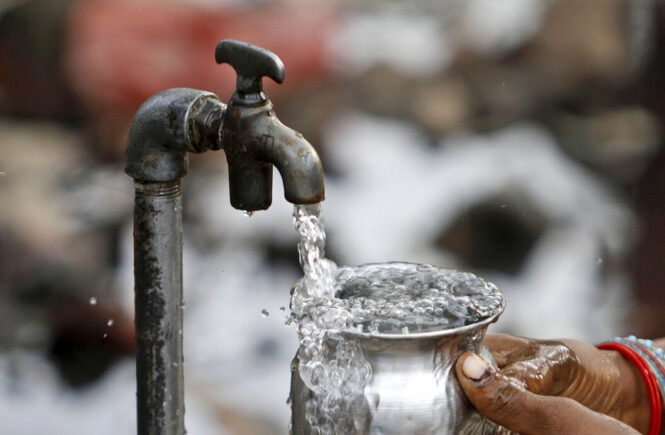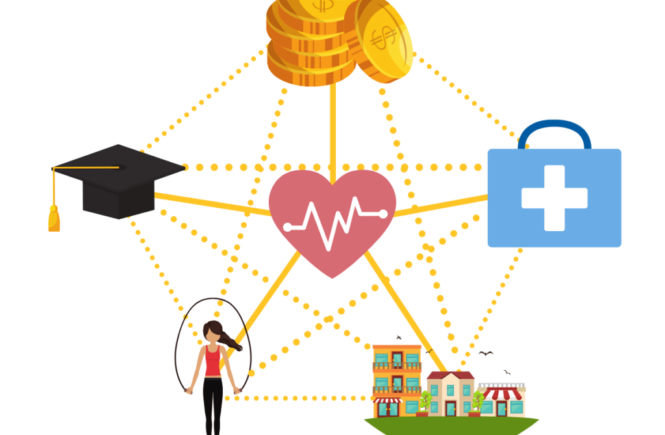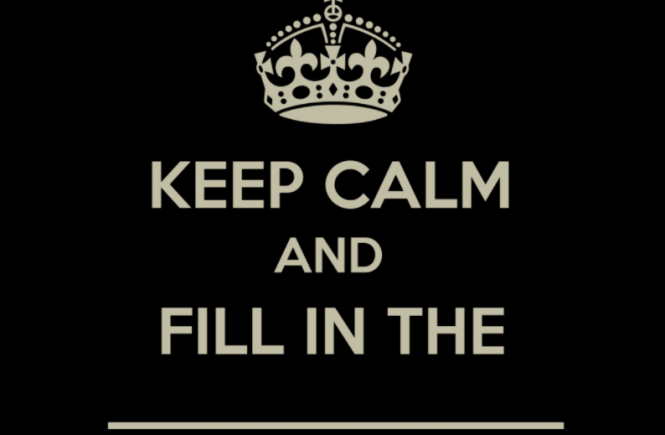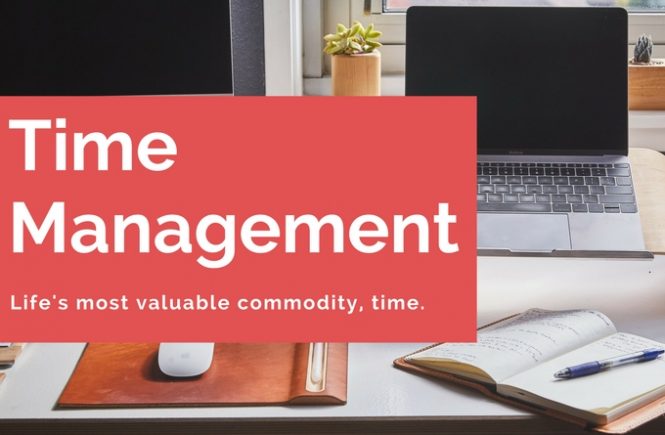Swapping for Sustainability: How Community Swap Shops Can Help Achieve SDG 12
Student submission by Jenae Daglas
In a world where sustainability is becoming increasingly crucial, governments around the globe have teamed up to tackle pressing global challenges and promote sustainable development worldwide. One of the major initiatives on this front is the introduction of Sustainable Development Goals (SDGs), aimed at incorporating sustainability into various aspects of life while encouraging collaboration on a global scale.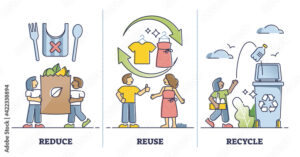
One of these goals, SDG 12, titled “Sustainable Production and Consumption,” emphasises the importance of significantly reducing waste generation by 2030 through prevention, reduction, recycling, and reuse. This goal shines a spotlight on the disproportionate use of resources throughout production processes.
Though the target year for achieving SDG 12 is 2030, there’s no reason why we can’t start making progress now. With teamwork and community spirit, we can make significant strides in just a few short years.
Introducing the solution: the community swap shop, a lively hotspot where goodies get a second chance at love instead of taking the landfill route. These ventures have proven to ace it, with Leeds University leading the charge with wildly successful weekly swap shops, paving the way for everyone to join in on the fun!
So, how does it work? Let’s break it down:
Establish a Local Hub: First things first, we need to find a central location in the community, whether it’s a community centre, library, or local business, that can serve as the heart of the swap shop. Accessibility is key, ensuring that everyone in the community can easily drop by to participate.
Promote Participation: Next, let’s spread the word and encourage community members to donate items they no longer need. By emphasising the environmental benefits of waste reduction and reuse, we can inspire people to join in and create positive change.
Organise Swapping Events: With donations pouring in, it’s time to host some swapping events! Organise items by category to make browsing and swapping a breeze. From clothing swaps to book exchanges, there’s something for everyone.
Now, let’s talk about the benefits:
Reduces Waste: By giving items a second chance through swapping, we’re keeping them out of the trash and reducing waste in our communities.
Promotes Resourcefulness: Swapping encourages us to get creative and find new uses for existing items, fostering a culture of reuse and repair.
Saves Money: Who doesn’t love saving a few bucks? Swapping allows community members to access items they need without breaking the bank.
Raises Awareness: Perhaps most importantly, swap shops raise awareness about the environmental impact of our consumption habits and empower individuals to make more sustainable choices in their daily lives.
So it’s clear, community swap shops offer a simple yet effective solution to help achieve SDG 12 and promote sustainability in our communities. By coming together and embracing the power of reuse, we can make a positive impact on the planet, one swap at a time. So, what are you waiting for? Let’s swap our way to a greener future!
Conserving Our Oceans: Coral Reef Restoration Sparks Hope for SDG14
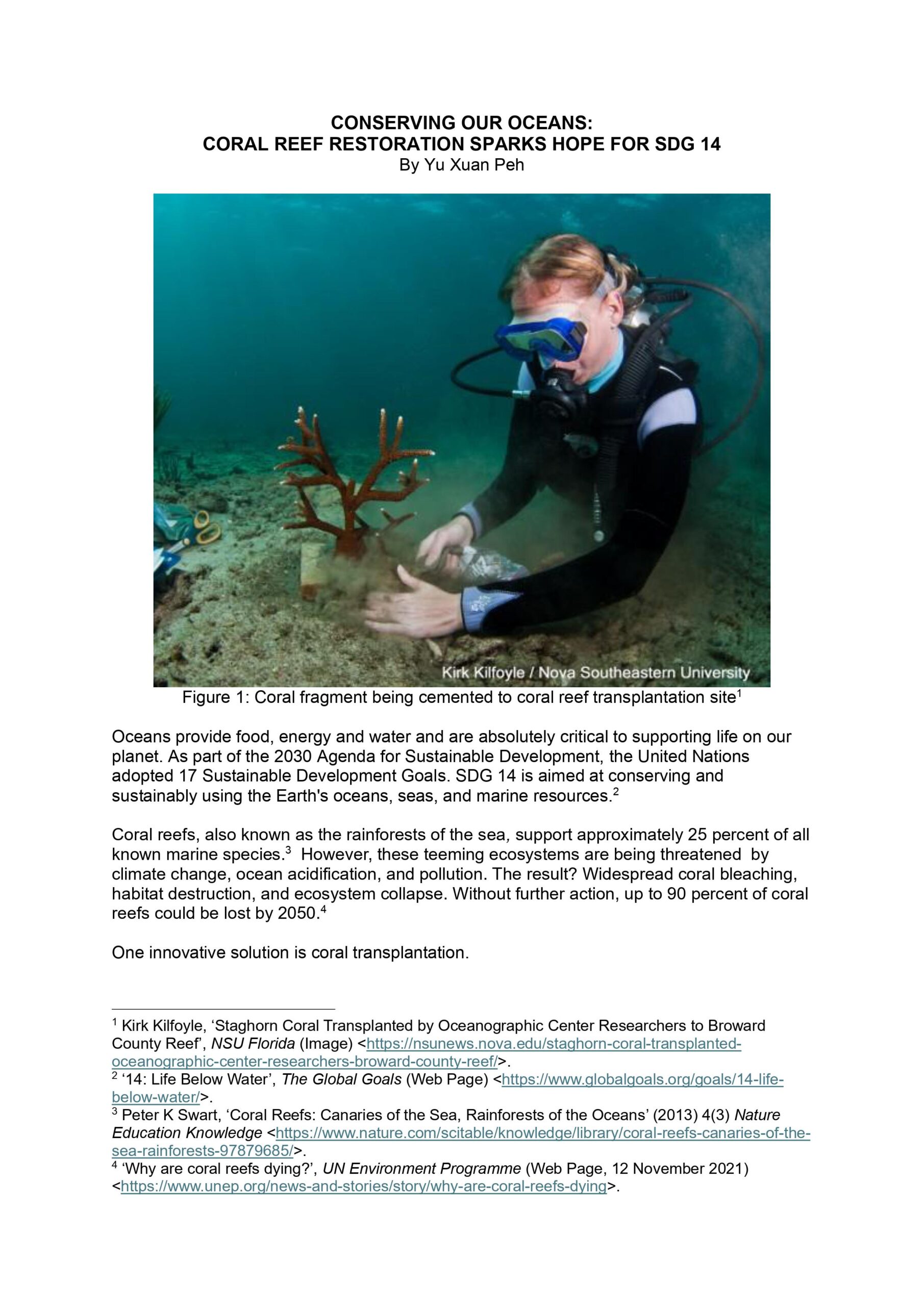
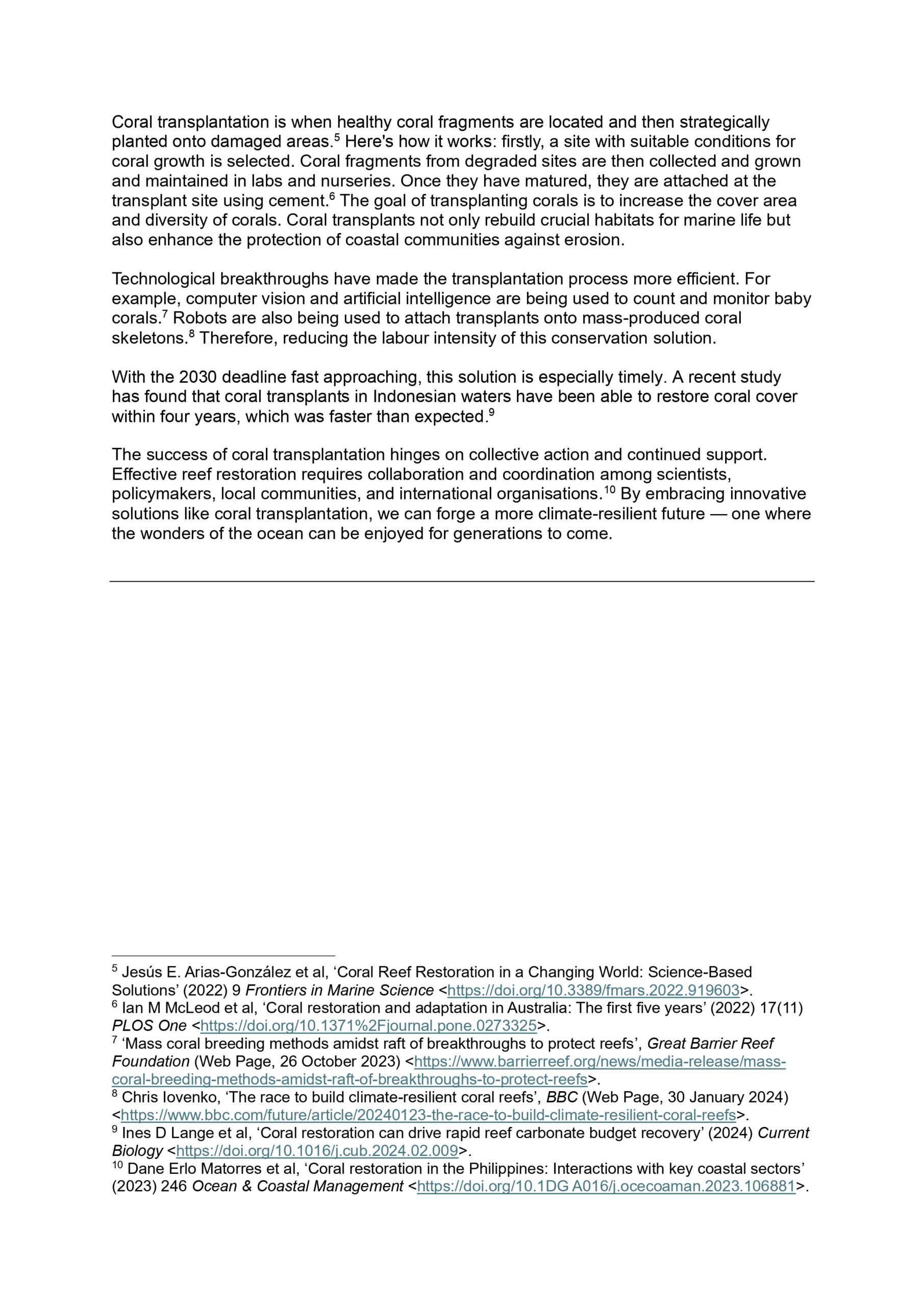
Metallic Iron as a Solution for Safe Drinking Water
Metallic Iron as a Solution for Safe Drinking Water
Student submission by Karina Finlayson
Sustainable Development Goal (SDG) 6 targets the availability and management of water and sanitation. A key issue in achieving this goal is the availability of safe drinking water, particularly for rural communities and underdeveloped countries. The United Nations (UN) states that in order to reach the 2030 goals, there must be a drastic increase in the progress being made to meet drinking water, sanitation, and hygiene targets [1]. This need calls for new and innovative techniques to be introduced in order to combat water contamination globally.
The use of iron for water treatment has been investigated by chemists over the last three decades, and as such offers a well-researched solution for SDG 6. Previous solutions for safe drinking water have utilised iron as a decontaminant within a centralised plant. One such solution investigated the use of an iron wall within an aquifer, which allowed ground water to pass through. Over a five-year period, the water quality was tested, and it was conclusively found that the iron wall effectively worked to break down contaminants within the ground water [2]. A review of iron in a number of experiments utilising a similar set-up revealed that while the effectiveness of decontamination decreased over time, sites were able to effectively meet decontamination goals in this way [3].
When considering this solution for use in rural communities, it is necessary to consider the cost and logistics of implementing a large-scale solution within an aquifer. Additionally, such communities are often ill-equipped to deal with natural disasters which may impact a centralised solution such as this. As such, a de-centralised solution using metallic iron is proposed [4].
Metallic iron can be sourced locally within communities, and the decontamination process does not require any energy requirements or in depth chemistry knowledge [4]. This small-scale solution utilises gravity, sand, gravel, and rock alongside the metallic iron. As water passes through the system, it can be effectively treated similarly to passing water through an iron wall in an aquifer. This is shown in Figure 1, where the ‘influent’ represents contaminated water, and Fe0 represents metallic iron.
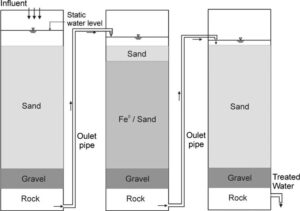
The primary concern raised in training communities on treating water with metallic iron is the potential for the iron to reach dangerous levels. As such, a detailed plan must be developed to ensure that communities are aware of methods for testing iron levels after undergoing the decontamination process.
By introducing the knowledge and basic systems required to treat ground water with metallic iron, safe drinking water can be made accessible to a larger number of communities globally. With an emphasis placed on the importance of testing the iron levels of the filtered water, the simple design of a metallic iron filter will allow communities to manage their water resources without any expertise in chemistry. This step forward in access to clean drinking water will aid in making global strides towards achieving SDG 6.
References
[1] United Nations Department of Economic and Social Affairs, “The Sustainable Development Goals Report 2022,” United Nations , 2022.
[2] S. F. O’Hannesin and R. W. Gillham, “Long-Term Performance of an In Situ “Iron Wall” for Remediation of VOCs,” Ground Water, vol. 36, no. 1, pp. 164-170, 1998.
[3] A. D. Henderson and A. H. Demond, “Long-Term Performance of Zero-Valent Iron Permeable,” Environmental Engineering Science, vol. 24, no. 4, pp. 401-423, 2007.
[4] C. Noubactep, “Metallic Iron for Water Treatment: A Critical Review,” Clean Soil Air Water, vol. 41, pp. 702-710, 2013.
Empowering Sustainable Energy: Leveraging Australia’s Mining Industry to Achieve the UN’s SDG 7
Empowering Sustainable Energy: Leveraging Australia’s Mining Industry to Achieve the UN’s SDG 7
By Christian Heil
The United Nations’ Sustainable Development Goals (SDGs) constitute a framework of 17 global objectives adopted by all UN member states as part of the 2030 Agenda for Sustainable Development. These goals encompass a wide range of critical issues, including poverty alleviation, mitigation of climate change, promotion of peace, and ensuring access to justice. Goal 7 specifically focuses on the need for affordable and clean energy solutions. In order to contribute to this goal, we can use the research being done in Australia’s mining industry to propose a practical and effective solution.
The mining sector plays a pivotal role in providing the essential raw materials for clean energy technologies, however it also accounts for a significant share of greenhouse gas emissions, amounting to 10% of the energy-related global total in 2018. Mining operations in Australia are incredibly remote, and running these mines off anything other than fossil fuels is unrealistic and impractical. However, a potential solution involves using carbonate mineral formation to offset these emissions. This method utilises mine tailings (leftover waste materials from the processing of ore) to facilitate the carbonisation reaction, and the formation of these minerals is a safe and permanent means of carbon storage.
Numerous studies have demonstrated the viability of this method. For instance, the Mt Keith nickel mine in Australia has found that its mine tailings are naturally sequestering carbon through the precipitation of a mineral called ‘hydromagnesite’, which actively absorbs atmospheric CO2 as it forms. This natural process has enabled the Mt Keith mine to offset its greenhouse gas emissions by 11% annually, just by leaving the mine waste out in open air and without any additional human interference. Importantly, the research has concluded that this rate of carbon uptake can be significantly increased using existing technology, which means a greater offset for the mine.
Ultramafic rock tailings, (that is, rocks that are low in silica content), have proven to be particularly efficient in storing carbon through this mineralisation process. The Mt Keith mine mentioned above, for example, is situated in such ultramafic rock sequences like olivine cumulate rocks and basalts.
Unfortunately, the widespread adoption of this technique faces financial challenges due to the current low carbon pricing, and companies aren’t incentivised to implement optimised carbon sequestration reactors. However, large companies such as BHP are implementing steps to reduce their carbon footprint, and seeing as how the mine waste is already sequestering atmospheric carbon passively, it wouldn’t be too much of a stretch to optimise this process for a greater reduction in net emissions.
Bridging the Divide: Empowering Every Educator, Enlightening Every Learner
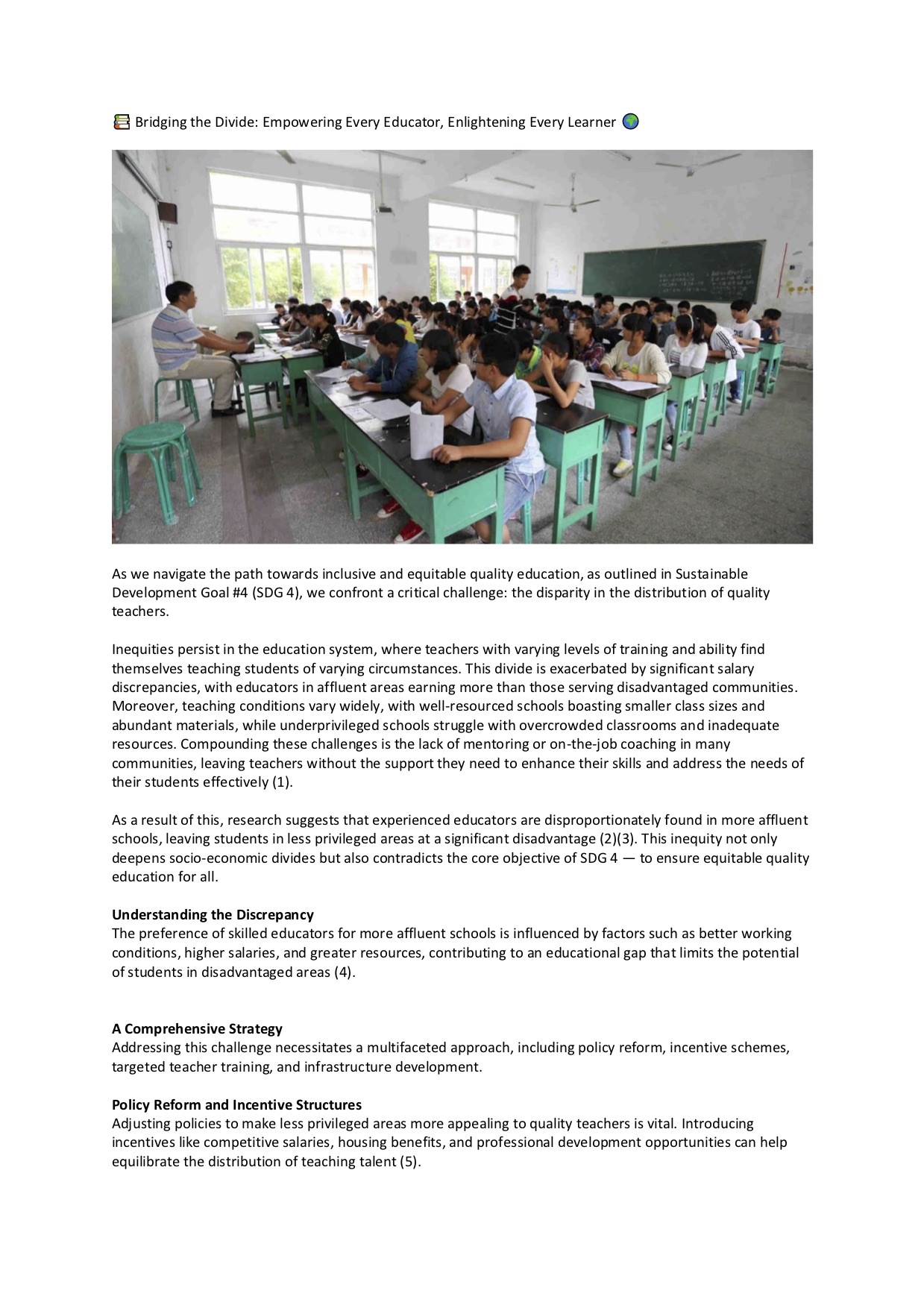
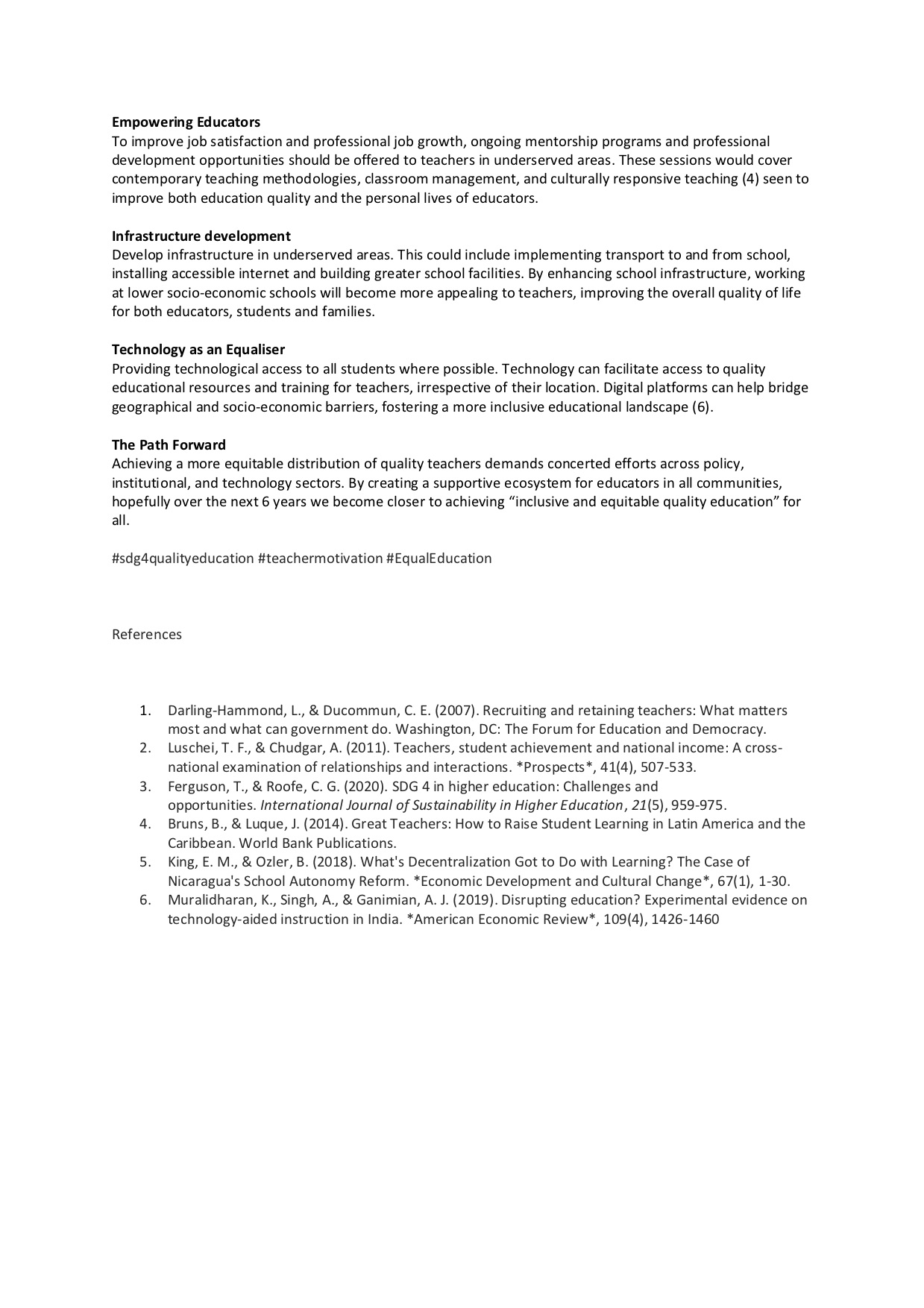
Health Education Online: Empowering Wellness Worldwide
Health Education Online: Empowering Wellness Worldwide
By Clarice Wong
Health influences all aspects of our lives – it impacts our daily activities, work, studies, relationships and our happiness. Sustainable Development Goal (SDG) 3 intends to promote good health and wellbeing for everyone. The main health issues worldwide are preventable communicable diseases such as malaria in low-income countries (Rowe, 2017). However, I believe it is also important to address common non-communicable diseases including cardiovascular disease which is more prevalent in middle- and high income countries.
Access to healthcare services and education are two main factors influencing rates of prevalent diseases. For example, educating individuals who live in tropical countries about wearing mosquito repellent or long-sleeved clothing can significantly reduce rates of malaria. These simple preventative measures can reduce healthcare expenses in treating malaria. Similarly, access to healthcare services including regular check-ups for people with chronic health conditions can help them in maintaining a healthy lifestyle. Research demonstrates that reducing sugar intake and regular exercise can prevent a wide range of common conditions such as Type 2 diabetes and obesity (La Sala & Pontiroli, 2020).
Digital health-promoting content can improve global health and wellbeing (Asi & Williams, 2018). My proposed solution is online educational health campaigns. A range of people in the healthcare and education sector will be involved. Firstly, healthcare professionals including doctors and medical staff will be part of the primary care team to treat individuals with health conditions. For example, doctors can schedule online consultations with patients who live in rural areas to increase accessibility to healthcare services. Secondly, medical educators and teachers can provide free online educational seminars to prevent common health conditions. For instance, presenting seminars in schools about healthy foods that improve cardiovascular health can prevent a range of heart-related diseases. These campaigns will also have websites where individuals can access digital health checklists as an online resource to take steps in maintaining their wellbeing. Steps include vaccinations, exercising daily and eating a balanced diet. Additionally, resources can include region-specific health advice and resources to prevent common diseases. For example, actionable steps to prevent malaria will be included in health checklists for countries with warmer climates.
Online educational health campaigns can assist with maintaining good health so everyone can be in good health and wellbeing, which meets the target of SDG 3. Free digital resources created by a global community of health experts can significantly prevent rates of diseases ranging from infectious to non-infectious illnesses. Educational resources can be especially helpful in low-income countries as many common conditions are preventable (Rizvi, 2022).
Overall, being in good health is an important aspect to live a good life. Together, let’s team up and contribute to a healthy global community.
References
Asi, Y. M., & Williams, C. (2018). The role of digital health in making progress toward Sustainable Development Goal (SDG) 3 in conflict-affected
populations. International Journal of Medical Informatics, 114, 114–120. https://doi.org/10.1016/j.ijmedinf.2017.11.003
La Sala, L., & Pontiroli, A. E. (2020). Prevention of Diabetes and Cardiovascular Disease in Obesity. International Journal of Molecular Sciences, 21(21), 8178. https://doi.org/10.3390/ijms21218178
Rizvi, D. (2022). Health education and global health: Practices, applications, and future research. Journal of Education and Health Promotion, 11(1), 262.
https://doi.org/10.4103/jehp.jehp_218_22
Rowe, A. K. (2017). Assessing the Health Impact of Malaria Control Interventions in the MDG/Sustainable Development Goal Era: A New Generation of Impact Evaluations. The American Journal of Tropical Medicine and Hygiene, 97(3), 6–8. https://doi.org/10.4269/ajtmh.17-0509
Monash Leipzig Exchange – A Student’s Perspective
Written by Nathan Martens
Most of us at one point or another have had that awful encounter with a ‘friend’ who just returned from a euro trip, having ‘discovered themselves’ and feels the need to reference their travels every two seconds with a pesky anecdote or the classic , “You think this is cold?! You should have seen winter in Rome!”.
A few months ago, I would have dismissed these people the same as the rest of us, silently willing them to shut their traps for fear of internally exploding and letting a snide remark fly.
HOWEVER, I’ve recently had a change of heart thanks to the Monash-Leipzig exchange program. I’ve become ‘that guy’ and I’m not remotely mad about it.
Tackling exam mind blanks with six simple tips
Written by Christina Nelson
#FeelingPrepared
It is that time of semester again … the mid-semester slump.
But there is good news as we are now past the halfway point!
You may have already had your mid-semester tests, or you have them to look *forward* to after the break. Regardless, we want to tackle those end-of-semester exams with confidence – and may all the late nights be worth it.
For many, exams are a headache and the thought of them makes you feel sick in your stomach.
Perhaps you have experienced the feeling where your mind freezes during an exam? Or where you just cannot recall why DNA is described as a double helix?
Student Life Management – Time
Time Management
Aidan Matthews @aidanjrmatthews
Time management is the essence of Life Management. It allows for the utilisation of time for the maximum productivity and the successful completion of tasks and goals. Developing techniques for your time as a student means you can have a social life, stay healthy, eat food, work a job and study a whole degree all at the same time. People have better time management skills than believed, but quite often struggle with the self-discipline and succumb to temptations.

